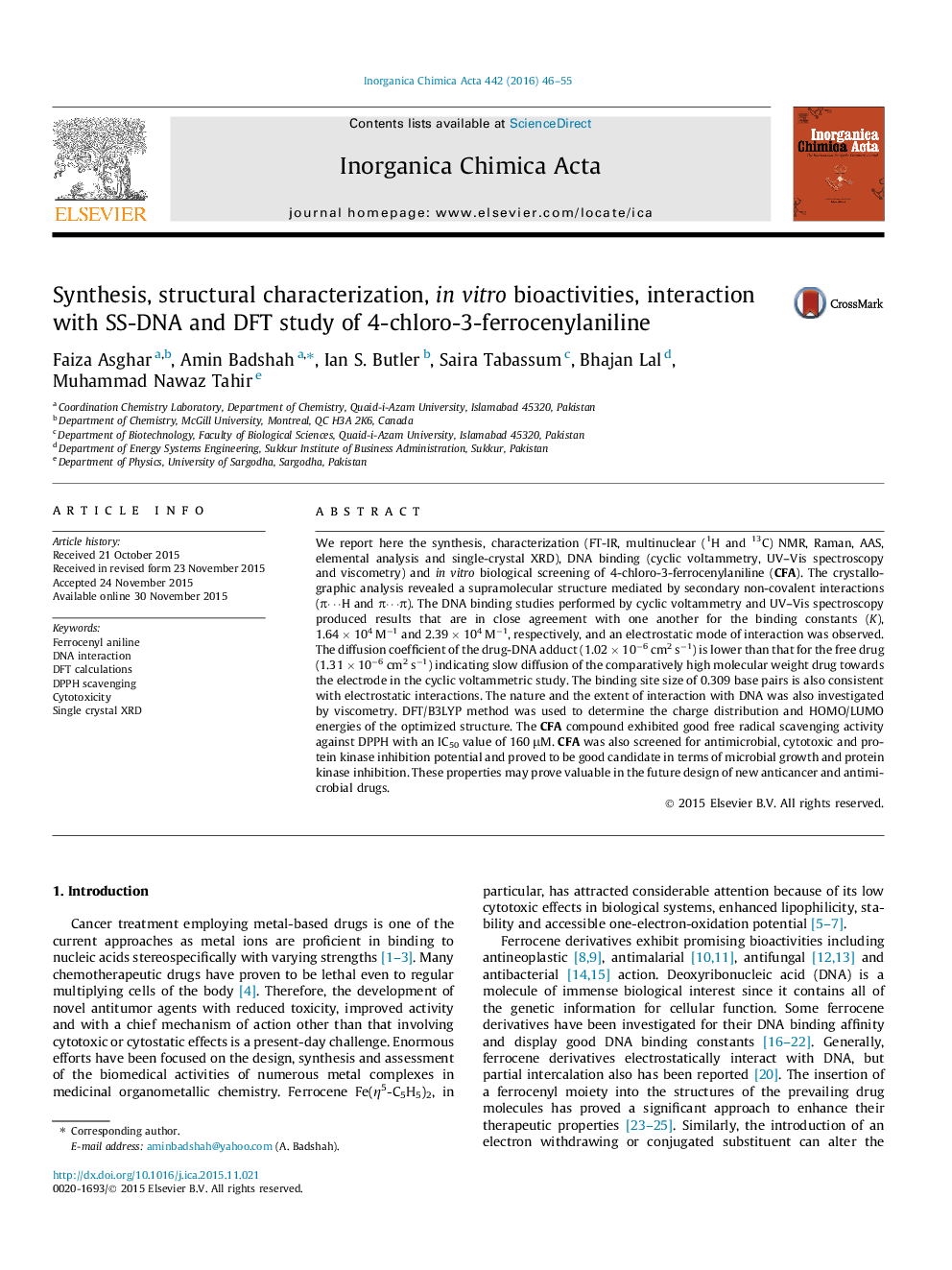| Article ID | Journal | Published Year | Pages | File Type |
|---|---|---|---|---|
| 1308356 | Inorganica Chimica Acta | 2016 | 10 Pages |
•Structural characterization by FT-IR, Raman, NMR, AAS, CHNS, single crystal XRD.•Good DNA binder and DPPH scavenger.•Theoretical calculations were made using DFT/B3LYP method.•Decent candidate in terms of cytotoxicity and protein kinase inhibition.•Moderate antimicrobial agent.
We report here the synthesis, characterization (FT-IR, multinuclear (1H and 13C) NMR, Raman, AAS, elemental analysis and single-crystal XRD), DNA binding (cyclic voltammetry, UV–Vis spectroscopy and viscometry) and in vitro biological screening of 4-chloro-3-ferrocenylaniline (CFA). The crystallographic analysis revealed a supramolecular structure mediated by secondary non-covalent interactions (π⋯H and π⋯π). The DNA binding studies performed by cyclic voltammetry and UV–Vis spectroscopy produced results that are in close agreement with one another for the binding constants (K), 1.64 × 104 M−1 and 2.39 × 104 M−1, respectively, and an electrostatic mode of interaction was observed. The diffusion coefficient of the drug-DNA adduct (1.02 × 10−6 cm2 s−1) is lower than that for the free drug (1.31 × 10−6 cm2 s−1) indicating slow diffusion of the comparatively high molecular weight drug towards the electrode in the cyclic voltammetric study. The binding site size of 0.309 base pairs is also consistent with electrostatic interactions. The nature and the extent of interaction with DNA was also investigated by viscometry. DFT/B3LYP method was used to determine the charge distribution and HOMO/LUMO energies of the optimized structure. The CFA compound exhibited good free radical scavenging activity against DPPH with an IC50 value of 160 μM. CFA was also screened for antimicrobial, cytotoxic and protein kinase inhibition potential and proved to be good candidate in terms of microbial growth and protein kinase inhibition. These properties may prove valuable in the future design of new anticancer and antimicrobial drugs.
Graphical abstractThe DNA binding competency of ferrocenyl aniline (CFA) evaluated by CV, UV and viscometry ascertain it as a good DNA binder with electrostatic mode of interaction. The compound also exhibited good antioxidant activity. HOMO–LUMO analysis was carried out by DFT method.Figure optionsDownload full-size imageDownload as PowerPoint slide
